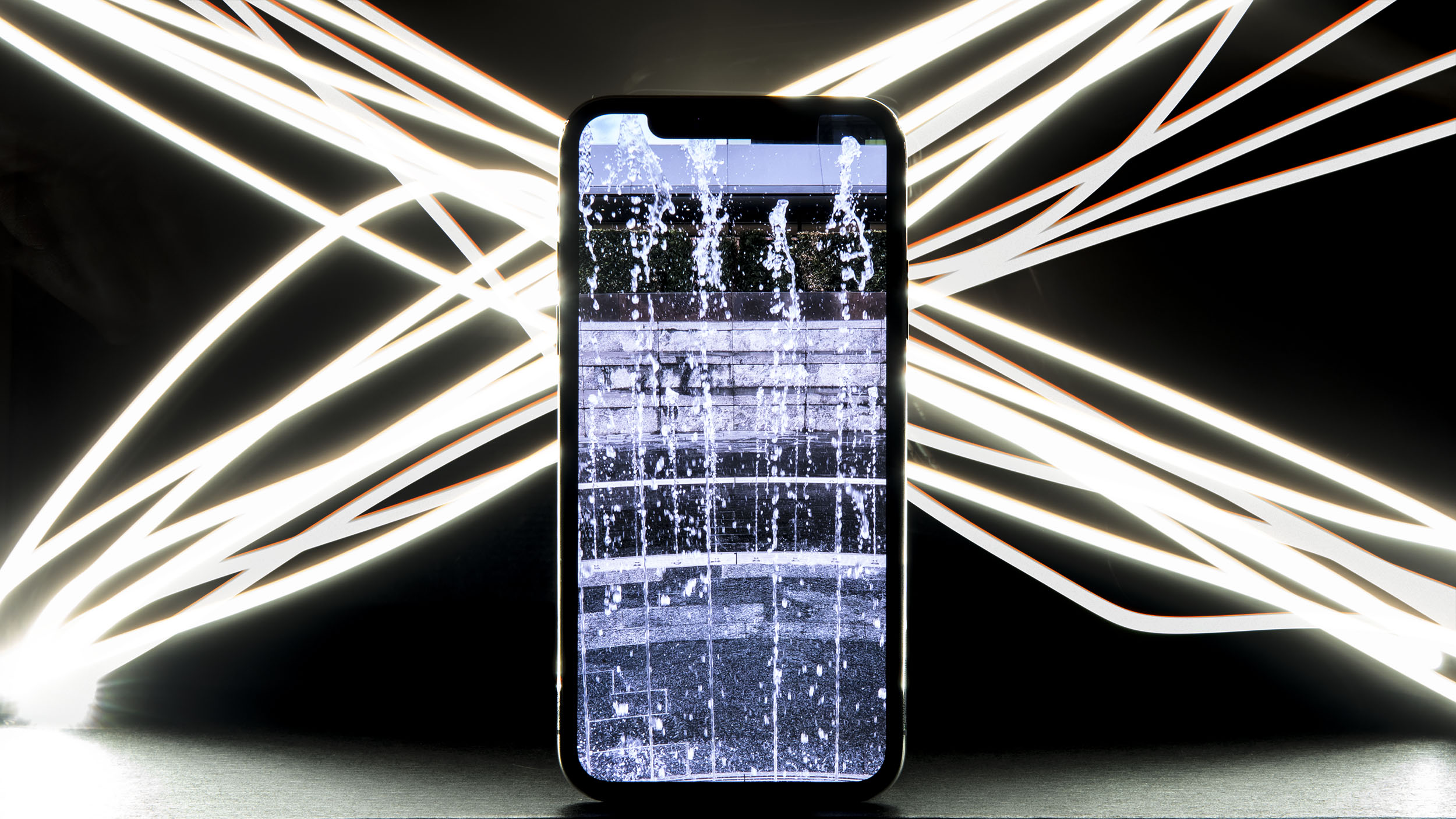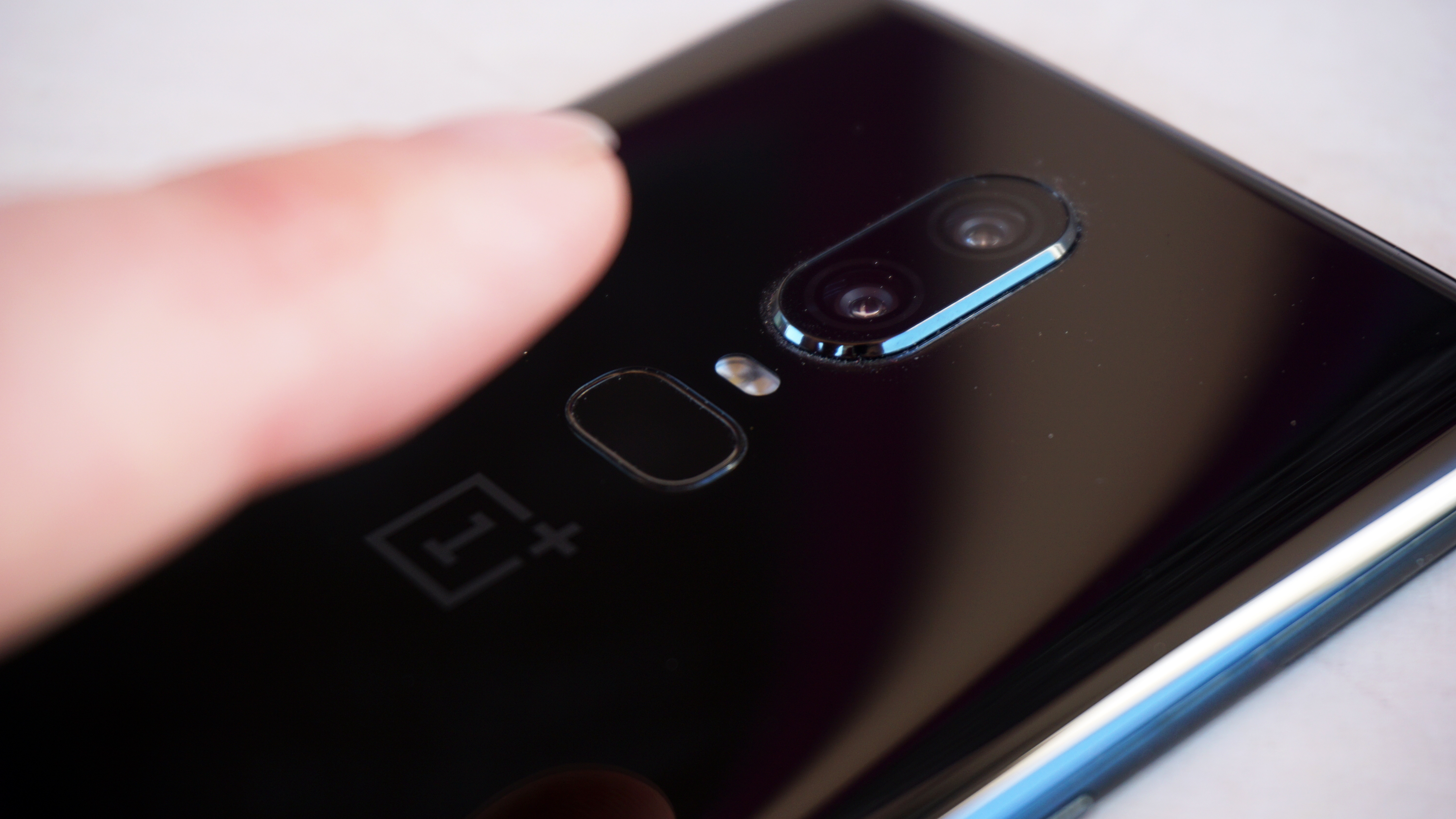OnePlus 6 vs iPhone X: almost half the price, but does it beat Apple's top phone?
The most expensive iPhone vs the OnePlus 6

We've just seen the OnePlus 6 for the first time and it manages to pack in a whole lot of spec with a high-end design and it's all for a more affordable price than a lot of other flagship phones.
But how does it compare to one of the most expensive and popular devices on the market? The iPhone X sits in our best phone list right now, but it's going to cost you a lot of money if you decide to buy it.
We've run down the specs, design, price and much more in this guide to help you make your mind up between the OnePlus 6 and the iPhone X.
OnePlus 6 vs iPhone X design

Both the OnePlus 6 and iPhone X have glass backs with metal edges, but that's where the similarities end.
The OnePlus 6 is a touch bigger than the iPhone X - that's so it can house that larger display - but it's only a touch heavier at 177g compared to the iPhone X's 174g.
Each has a high-end, premium-feel design with both being the most attractive products from each of the respective companies.
The notch is at the top of the screen on both devices, but on the OnePlus 6 you can hide it within the settings on the phone so it blacks out the bits to the side of the notch at the top of the screen.
Sign up for breaking news, reviews, opinion, top tech deals, and more.
The OnePlus 6 comes in your choice of mirror black, midnight black or silk white, while the iPhone X is restricted to plain white or black color choices.

There's a fingerprint scanner on the rear of the OnePlus 6, but there isn't one on the iPhone X and instead the company has opted to just use face unlock technology to protect your privacy. The OnePlus 6 has facial unlocking as well, but you may feel safer having the fingerprint option as well.
OnePlus 6 vs iPhone X display
Upon first look, the OnePlus 6 and iPhone X may look to have similar screens but there are a lot of differences you need to know about here.
It's a 6.28-inch optic AMOLED display on the OnePlus 6 with a Full HD+ resolution (that's 1080 x 2280). The Super AMOLED display on the iPhone X is smaller at 5.8-inches, but it has a better resolution at 1125 x 2436.

That means there are more pixels per inch on the iPhone X at 458ppi, while the OnePlus 6 has 402ppi. If you want the larger screen, you'll likely enjoy the OnePlus 6 but if you want an easier to use or higher resolution display you'll probably like the iPhone X.
We can't fully judge the display on the OnePlus 6 yet, so be sure to check back for our full look at the screen quality in our final review.
What our OnePlus 6 hands on video
OnePlus 6 vs iPhone X OS and power
The new OnePlus 6 comes running the latest Android 8.1 Oreo software with the company's own Oxygen OS UI running over the top. It looks top-end and you can expect OnePlus to support OS updates for this phone for at least a couple of years.
The iPhone X comes running the latest iOS 11 software, which if you're used to using iPhones it'll probably be the best for you to run.
Inside the OnePlus 6 is a Qualcomm Snapdragon 845 processor, which we've seen inside a lot of flagship phones this year and it has impressed us. That's paired with either 6GB or 8GB of RAM, depending on which version of the phone you go for.
You've also got the choice of 64GB / 128GB or 256GB storage options, with the largest option being the most expensive. More about that down at the bottom of this article.
As for the iPhone X, you can expect the height of iPhone performance here with the A11 Bionic chipset inside paired with 3GB of RAM. Although on paper that may not sound as powerful as the OnePlus 6, we've found the iPhone X can hold its own in terms of performance against the top-end devices 2018 has brought.
OnePlus 6 vs iPhone X camera and battery

Cameras on these two devices are still dramatically different. The OnePlus 6 comes with a dual sensor 16MP and 20MP working together to take photos. Both of those are f/1.7 and can record a variety of video including 120fps slow motion at 720p.
On the front of the phone is a 16MP (f/2.0) selfie camera too.
In terms of raw spec, the iPhone X looks worse off with a dual sensor rear camera that's a 12MP sensor with an aperture of f/1.8 and another 12MP with f/2.4 aperture too. Those are used for a variety of modes including a 2 x optical zoom, which is something you don't get on the OnePlus 6.
It can also do slow motion video at 240fps in Full HD, so if you want to be catching top quality slowed down video this will be the phone for you. The front camera isn't as strong as on the OnePlus 6 as it's a 7MP f/2.2 sensor that can record slow motion video as well.

We've yet to test the battery life on the OnePlus 6, but it contains a 3300mAh cell inside with Dash Charge fast-charging onboard too.
The iPhone X comes with a 2716mAh cell that has fast-charging too and will go up to 50% full in just 30 minutes of charging. Apple's phone features wireless charging, but the OnePlus 6 doesn't.
Price and availability
You'll be able to buy the OnePlus 6 around the world on May 22 and it should arrive on your doorstep soon after.
Pricing starts at $529 / £469 (about AU$700) for the cheapest version and the most expensive costs $629 / £569 (about AU$840). That's touch more expensive than the OnePlus 5T that started at cost $499, £449, AU$599.
The iPhone X is already on sale and it's much more expensive than what the OnePlus 6 costs. The price starts at $999 / £999 / AU$1,579 for the 64GB one, while the 256GB one is much more expensive at $1,149 / £1,149 / AU$1,829.
That makes the OnePlus 6 half the price of the iPhone X in the UK and just over half the price in the US. That may be a big factor when you come to buy your next phone.
Takeaway
Both of these devices are top-end products that are going to satisfy a lot of your flagship phone needs.
One is significantly more expensive with the iPhone X being one of the most priciest phones you can buy right now, but you usually pay that for Apple's devices.
It does have a slightly more features built-in, so it depends a lot on which design you like the most, whether you want to be on Android or iOS and how much you're willing to spend on your new phone.

James is the Editor-in-Chief at Android Police. Previously, he was Senior Phones Editor for TechRadar, and he has covered smartphones and the mobile space for the best part of a decade bringing you news on all the big announcements from top manufacturers making mobile phones and other portable gadgets. James is often testing out and reviewing the latest and greatest mobile phones, smartwatches, tablets, virtual reality headsets, fitness trackers and more. He once fell over.